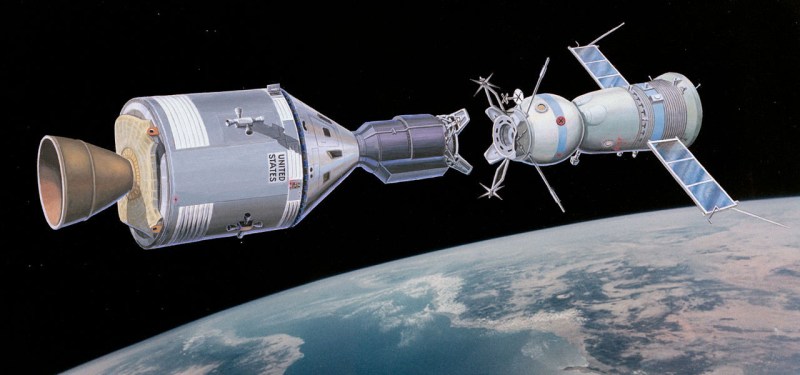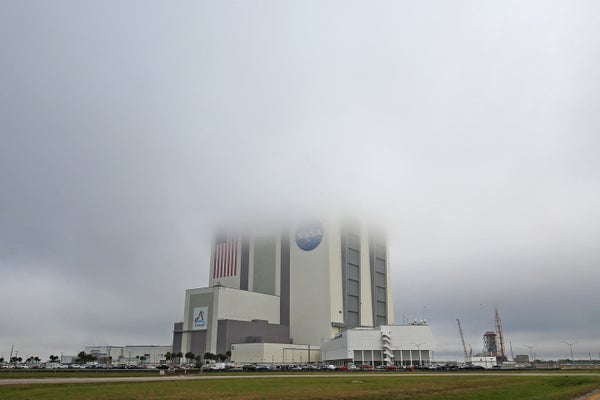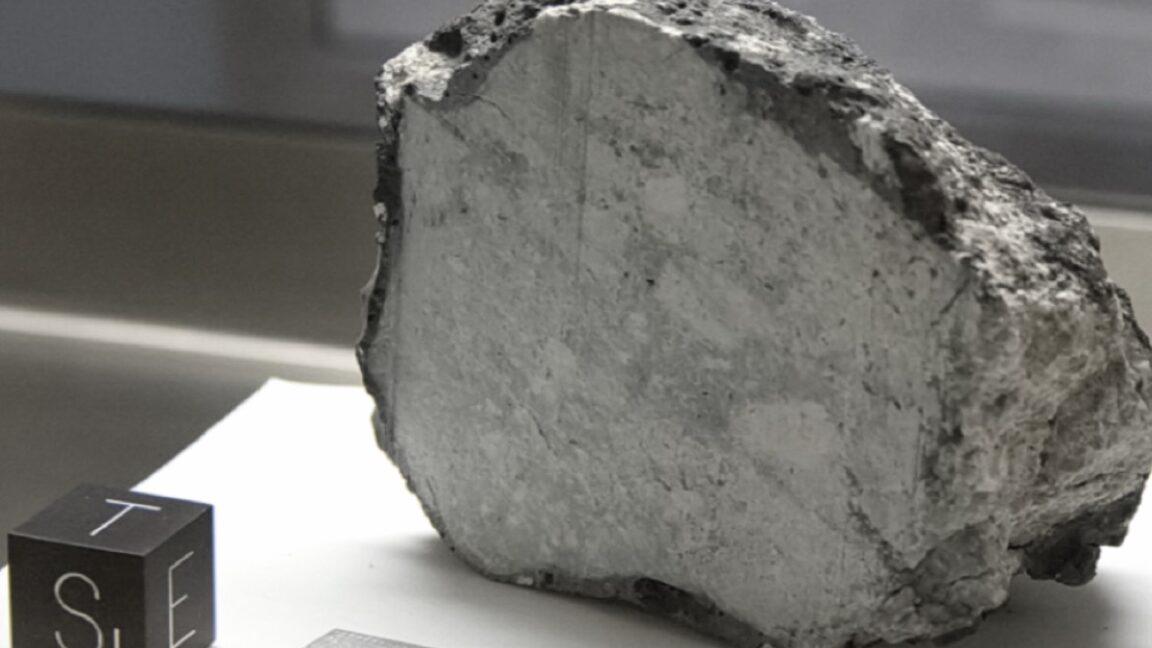This guy has a quick fix for the crisis on Brooklyn’s busiest highway—and few are paying attention
New York City’s Brooklyn-Queens Expressway is falling apart. Built between 1946 and 1964, the urban highway runs 12.1 miles through the heart of the two boroughs to connect on either end with the interstate highway system—a relic of midcentury car-oriented infrastructure, and a prime example of the dwindling lifespan of roads built during that time.
The degradation is most visible—and most pressing—in a section running alongside Brooklyn Heights known as the triple cantilever. This 0.4-mile section, completed in 1954, is unique among U.S. highways in that it juts out from the side of a hill and stacks the two directions of traffic on balcony-like decks, one slightly overhanging the other. A third level holds a well-loved park, the Brooklyn Heights Promenade.
This unusual layer cake of a freeway was a marvel of engineering in its day, though not without controversy. Masterminded by Robert Moses, the city’s all-powerful, often ruthless city planner for more than four decades, the roadway bisects working-class and immigrant neighborhoods that grapple with the health and environmental fallout to this day.
Like the reputation of the man who built it, the triple cantilever has aged poorly. Its narrow width,has made all but the most basic maintenance incredibly difficult, and its 71-year-old structure is constantly battered by the ever heavier automobiles and trucks. Designed to accommodate around 47,000 vehicles per day, it now carries more than three times that amount. Deteriorating deck joints and failing steel-reinforced concrete have led many to worry the triple cantilever is on the verge of collapse. An expert panel warned in 2020 that the triple cantilever could be unusable by 2026, and only then did interim repairs get made to keep it standing.The mounting concern comes amid a 50-year decline in direct government spending on infrastructure in the U.S., according to a recent analysis by Citigroup. Simply maintaining existing infrastructure is a challenge, the report notes. Meanwhile, the American Society of Civil Engineers’ grade for the country’s infrastructure has improved, from a D+ in 2017 to a C in 2025. Now even private credit firms are circling: As reported in Bloomberg, Apollo Global Management estimates that a boom in infrastructure deals help could grow the private debt market up to a staggering trillion.
Independent urban designer Marc Wouters has an idea on how to fix BQE’s cantilever. He’s been working on it for years. “My process is that I always interview people in the community before I do any drawings,” he says. “So I really have listened to pretty much everybody over the past few years.” Unsolicited and developed in his own spare time, Wouters has designed an alternative for the triple cantilever that he named the BQE Streamline Plan.
BQE Streamline PlanHis concept, based on decades of experience in urban planning, infrastructure, and resilience projects in communities across the country, is relatively simple: extend the width of the two traffic-bearing cantilevers and add support beams to their outside edge, move both directions of traffic onto four lanes on the first level, and turn the second level into a large freeway cap park. Instead of major rebuilding efforts, Wouters’s proposal is more of a reinforcement and expansion, with a High Line-style park plopped on top. Though he’s not an engineer, Wouters is confident that his design would shift enough strain off the existing structure to allow it to continue functioning for the foreseeable future.“What I’ve done is come up with a plan that happens to be much less invasive, faster to build, a lot cheaper, and it encompasses a lot of what the community wants,” he says. “Yet it still handles the same capacity as the highway does right now.”
So what will it take for this outsider’s idea to be considered a viable design alternative?
This idea had been brewing in his mind for years. Wouters, who lives near the triple cantilever section of the BQE in Brooklyn Heights, has followed the highway’s planning process for more than a decade.
As complex infrastructure projects go, this one is particularly convoluted. The BQE is overseen by both the state of New York and New York City, among others, with the city in charge of the 1.5-mile section that includes the triple cantilever. This dual ownership has complicated the management of the highway and its funding. The city and the state have launched several efforts over the years to reimagine the highway’s entire length.
In winter 2018, the city’s Department of Transportationreleased two proposals to address the ailing cantilever. Not seeing what they wanted from either one, Brooklyn Heights Association, a nonprofit neighborhood group, retained Wouters and his studio to develop an alternative design. He suggested building a temporary parallel bypass that would allow a full closure and repair of the triple cantilever. That proposal, along with competing ideas developed under the previous mayoral administration, went by the wayside in 2022, when the latest BQE redesign process commenced.
Wouters found himself following yet another community feedback and planning process for the triple cantilever. The ideas being proposed by the city’s DOT this time around included a plan that would chew into the hillside that currently supports the triple cantilever to move the first tier of traffic directly underneath the second, and add a large girding structure on its open end to hold it all up.
Other options included reshaping the retaining wall that currently holds up the triple cantilever, moving traffic below grade into a wide tunnel, or tearing the whole thing down and rebuilding from scratch. Each would be time-consuming and disruptive, and many of them cut into another well-loved public space immediately adjacent to the triple cantilever, Brooklyn Bridge Park. None of these options has anything close to unanimous support. And any of them will cost more than billion—a price tag that hits much harder after the Federal Highway Administration rejected an million grant proposal for fixing the BQE back in early 2024.
BQE Streamline PlanWouters is no highway zealot. In fact, he’s worked on a project heading into construction in Syracuse that will replace an underutilized inner-city highway with a more appropriately sized boulevard and developable land. But he felt sure there was a better way forward—a concept that would work as well in practice as on paper.
“I just kept going to meetings and waiting to see what I thought was a progressive solution,” Wouters says. Unimpressed and frustrated, he set out to design it himself.
Wouters released the Streamline Plan in March. The concept quickly gathered interest, receiving a flurry of local news coverage. He has since met with various elected officials to discuss it.
But as elegant as Wouters’s concept may be, some stakeholders remain unconvinced that the city should be going all in on a reinterpretation of the triple cantilever. What might be more appropriate, critics say, is to make necessary fixes now to keep the triple cantilever safe and functional, and to spend more time thinking about whether this section of highway is even what the city needs in the long term.
A group of local organizations is calling for a more comprehensive reconsideration of the BQE under the premise that its harms may be outnumbering its benefits. Launched last spring, the Brooklyn-Queens Expressway Environmental Justice Coalition wants any planning for the future of the BQE to include efforts to address its health and environmental impacts on neighboring communities and to seek an alternative that reconnects communities that have been divided by the corridor.
One member of this coalition is the Riders Alliance, a nonprofit focused on improving public transit in New York. Danny Pearlstein, the group’s policy and communications director, says implementing a major redesign of the triple cantilever would just reinforce car dependency in a place that’s actually well served by public transit. The environmental justice coalition’s worry is that rebuilding this one section in a long-term fashion could make it harder for change across the length of the entire BQE and could increase the environmental impact the highway has on the communities that surround it.
“This is not just one neighborhood. This is communities up and down the corridor that don’t resemble each other very much in income or background who are united and are standing together for something that’s transformative, rather than doubling down on the old ways,” Pearlstein says.Lara Birnback is executive director of the Brooklyn Heights Association, representing a neighborhood of roughly 20,000 people. Her organization, which worked directly with Wouters in the past, is circumspect about his latest concept. “It’s certainly more interesting and responsive to the kinds of things that the community has been asking for when thinking about the BQE. It’s more of those things than we’ve seen from any of the designs that New York City DOT has presented to us through their engagement process,” she says. “But at the end of the day, it’s still a way of preserving more or less the status quo of the BQE as a major interstate highway running through the borough.”
She argues it makes more sense to patch up the triple cantilever and use the extra years of service that buys to do a more radical rethinking of the BQE’s future.“We really strongly encourage the city to move forward immediately with a more short-term stabilization plan for the cantilever, with repairs that would last, for example, 20 to 25 years rather than spending billions and billions of dollars rebuilding it for the next 100 years,” Birnback says.
Birnback says a major rebuilding plan like the one Wouters is proposing—for all its community benefits—could end up doing more harm to the city. “I think going forward now with a plan that both embeds the status quo and most likely forecloses on the possibility of real transformation across the corridor is a mistake,” she says.
NYC DOT expects to begin its formal environmental review process this year, laying the necessary groundwork for deciding on a plan for what to do with the triple cantilever, either for the short term or the long term. The environmental process will evaluate all concepts equally, according to DOT spokesperson Vincent Barone, who notes that the department is required to review and respond to all feedback that comes in through that process.
There is technically nothing holding back Wouters’s proposal from being one of the alternatives considered. And he may have some important political support to help make that happen. Earlier this month, Brooklyn’s Community District 2 board formally supported the plan. They are calling for the city’s transportation department to include it in the BQE’s formal environmental review process when it starts later this year.Wouters argues that his proposal solves the pressing structural problems of the triple cantilever while also opening resources to deal with the highway’s big picture challenges. “The several hundred million dollars of savings is now funding that could go to other parts of the BQE. And there are other parts that are really struggling,” he says. “I’m always thinking about the whole length and about all these other communities, not just this one.”
With a new presidential administration and a mayoral primary election in June, what happens with the triple cantilever is very much up in the air. But if the environmental review process begins as planned this year, it only makes sense for every option to fall under consideration. What gets built—or torn down, or reconstructed, or reinterpreted—could reshape part of New York City for generations.
#this #guy #has #quick #fixThis guy has a quick fix for the crisis on Brooklyn’s busiest highway—and few are paying attention
New York City’s Brooklyn-Queens Expressway is falling apart. Built between 1946 and 1964, the urban highway runs 12.1 miles through the heart of the two boroughs to connect on either end with the interstate highway system—a relic of midcentury car-oriented infrastructure, and a prime example of the dwindling lifespan of roads built during that time.
The degradation is most visible—and most pressing—in a section running alongside Brooklyn Heights known as the triple cantilever. This 0.4-mile section, completed in 1954, is unique among U.S. highways in that it juts out from the side of a hill and stacks the two directions of traffic on balcony-like decks, one slightly overhanging the other. A third level holds a well-loved park, the Brooklyn Heights Promenade.
This unusual layer cake of a freeway was a marvel of engineering in its day, though not without controversy. Masterminded by Robert Moses, the city’s all-powerful, often ruthless city planner for more than four decades, the roadway bisects working-class and immigrant neighborhoods that grapple with the health and environmental fallout to this day.
Like the reputation of the man who built it, the triple cantilever has aged poorly. Its narrow width,has made all but the most basic maintenance incredibly difficult, and its 71-year-old structure is constantly battered by the ever heavier automobiles and trucks. Designed to accommodate around 47,000 vehicles per day, it now carries more than three times that amount. Deteriorating deck joints and failing steel-reinforced concrete have led many to worry the triple cantilever is on the verge of collapse. An expert panel warned in 2020 that the triple cantilever could be unusable by 2026, and only then did interim repairs get made to keep it standing.The mounting concern comes amid a 50-year decline in direct government spending on infrastructure in the U.S., according to a recent analysis by Citigroup. Simply maintaining existing infrastructure is a challenge, the report notes. Meanwhile, the American Society of Civil Engineers’ grade for the country’s infrastructure has improved, from a D+ in 2017 to a C in 2025. Now even private credit firms are circling: As reported in Bloomberg, Apollo Global Management estimates that a boom in infrastructure deals help could grow the private debt market up to a staggering trillion.
Independent urban designer Marc Wouters has an idea on how to fix BQE’s cantilever. He’s been working on it for years. “My process is that I always interview people in the community before I do any drawings,” he says. “So I really have listened to pretty much everybody over the past few years.” Unsolicited and developed in his own spare time, Wouters has designed an alternative for the triple cantilever that he named the BQE Streamline Plan.
BQE Streamline PlanHis concept, based on decades of experience in urban planning, infrastructure, and resilience projects in communities across the country, is relatively simple: extend the width of the two traffic-bearing cantilevers and add support beams to their outside edge, move both directions of traffic onto four lanes on the first level, and turn the second level into a large freeway cap park. Instead of major rebuilding efforts, Wouters’s proposal is more of a reinforcement and expansion, with a High Line-style park plopped on top. Though he’s not an engineer, Wouters is confident that his design would shift enough strain off the existing structure to allow it to continue functioning for the foreseeable future.“What I’ve done is come up with a plan that happens to be much less invasive, faster to build, a lot cheaper, and it encompasses a lot of what the community wants,” he says. “Yet it still handles the same capacity as the highway does right now.”
So what will it take for this outsider’s idea to be considered a viable design alternative?
This idea had been brewing in his mind for years. Wouters, who lives near the triple cantilever section of the BQE in Brooklyn Heights, has followed the highway’s planning process for more than a decade.
As complex infrastructure projects go, this one is particularly convoluted. The BQE is overseen by both the state of New York and New York City, among others, with the city in charge of the 1.5-mile section that includes the triple cantilever. This dual ownership has complicated the management of the highway and its funding. The city and the state have launched several efforts over the years to reimagine the highway’s entire length.
In winter 2018, the city’s Department of Transportationreleased two proposals to address the ailing cantilever. Not seeing what they wanted from either one, Brooklyn Heights Association, a nonprofit neighborhood group, retained Wouters and his studio to develop an alternative design. He suggested building a temporary parallel bypass that would allow a full closure and repair of the triple cantilever. That proposal, along with competing ideas developed under the previous mayoral administration, went by the wayside in 2022, when the latest BQE redesign process commenced.
Wouters found himself following yet another community feedback and planning process for the triple cantilever. The ideas being proposed by the city’s DOT this time around included a plan that would chew into the hillside that currently supports the triple cantilever to move the first tier of traffic directly underneath the second, and add a large girding structure on its open end to hold it all up.
Other options included reshaping the retaining wall that currently holds up the triple cantilever, moving traffic below grade into a wide tunnel, or tearing the whole thing down and rebuilding from scratch. Each would be time-consuming and disruptive, and many of them cut into another well-loved public space immediately adjacent to the triple cantilever, Brooklyn Bridge Park. None of these options has anything close to unanimous support. And any of them will cost more than billion—a price tag that hits much harder after the Federal Highway Administration rejected an million grant proposal for fixing the BQE back in early 2024.
BQE Streamline PlanWouters is no highway zealot. In fact, he’s worked on a project heading into construction in Syracuse that will replace an underutilized inner-city highway with a more appropriately sized boulevard and developable land. But he felt sure there was a better way forward—a concept that would work as well in practice as on paper.
“I just kept going to meetings and waiting to see what I thought was a progressive solution,” Wouters says. Unimpressed and frustrated, he set out to design it himself.
Wouters released the Streamline Plan in March. The concept quickly gathered interest, receiving a flurry of local news coverage. He has since met with various elected officials to discuss it.
But as elegant as Wouters’s concept may be, some stakeholders remain unconvinced that the city should be going all in on a reinterpretation of the triple cantilever. What might be more appropriate, critics say, is to make necessary fixes now to keep the triple cantilever safe and functional, and to spend more time thinking about whether this section of highway is even what the city needs in the long term.
A group of local organizations is calling for a more comprehensive reconsideration of the BQE under the premise that its harms may be outnumbering its benefits. Launched last spring, the Brooklyn-Queens Expressway Environmental Justice Coalition wants any planning for the future of the BQE to include efforts to address its health and environmental impacts on neighboring communities and to seek an alternative that reconnects communities that have been divided by the corridor.
One member of this coalition is the Riders Alliance, a nonprofit focused on improving public transit in New York. Danny Pearlstein, the group’s policy and communications director, says implementing a major redesign of the triple cantilever would just reinforce car dependency in a place that’s actually well served by public transit. The environmental justice coalition’s worry is that rebuilding this one section in a long-term fashion could make it harder for change across the length of the entire BQE and could increase the environmental impact the highway has on the communities that surround it.
“This is not just one neighborhood. This is communities up and down the corridor that don’t resemble each other very much in income or background who are united and are standing together for something that’s transformative, rather than doubling down on the old ways,” Pearlstein says.Lara Birnback is executive director of the Brooklyn Heights Association, representing a neighborhood of roughly 20,000 people. Her organization, which worked directly with Wouters in the past, is circumspect about his latest concept. “It’s certainly more interesting and responsive to the kinds of things that the community has been asking for when thinking about the BQE. It’s more of those things than we’ve seen from any of the designs that New York City DOT has presented to us through their engagement process,” she says. “But at the end of the day, it’s still a way of preserving more or less the status quo of the BQE as a major interstate highway running through the borough.”
She argues it makes more sense to patch up the triple cantilever and use the extra years of service that buys to do a more radical rethinking of the BQE’s future.“We really strongly encourage the city to move forward immediately with a more short-term stabilization plan for the cantilever, with repairs that would last, for example, 20 to 25 years rather than spending billions and billions of dollars rebuilding it for the next 100 years,” Birnback says.
Birnback says a major rebuilding plan like the one Wouters is proposing—for all its community benefits—could end up doing more harm to the city. “I think going forward now with a plan that both embeds the status quo and most likely forecloses on the possibility of real transformation across the corridor is a mistake,” she says.
NYC DOT expects to begin its formal environmental review process this year, laying the necessary groundwork for deciding on a plan for what to do with the triple cantilever, either for the short term or the long term. The environmental process will evaluate all concepts equally, according to DOT spokesperson Vincent Barone, who notes that the department is required to review and respond to all feedback that comes in through that process.
There is technically nothing holding back Wouters’s proposal from being one of the alternatives considered. And he may have some important political support to help make that happen. Earlier this month, Brooklyn’s Community District 2 board formally supported the plan. They are calling for the city’s transportation department to include it in the BQE’s formal environmental review process when it starts later this year.Wouters argues that his proposal solves the pressing structural problems of the triple cantilever while also opening resources to deal with the highway’s big picture challenges. “The several hundred million dollars of savings is now funding that could go to other parts of the BQE. And there are other parts that are really struggling,” he says. “I’m always thinking about the whole length and about all these other communities, not just this one.”
With a new presidential administration and a mayoral primary election in June, what happens with the triple cantilever is very much up in the air. But if the environmental review process begins as planned this year, it only makes sense for every option to fall under consideration. What gets built—or torn down, or reconstructed, or reinterpreted—could reshape part of New York City for generations.
#this #guy #has #quick #fix
















